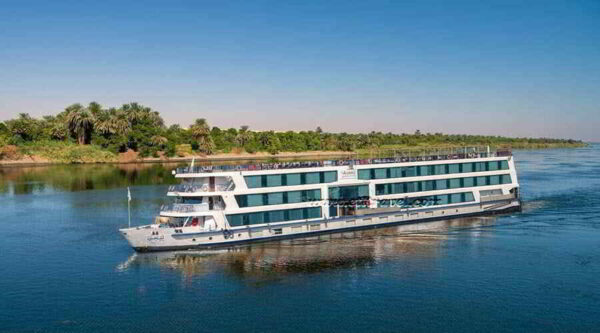The monuments and historical sites between Aswan and Abu Simbel
Egypt is one of the richest countries around the world in terms of monuments and ancient sites. Thanks to the Pharaohs and their advanced techniques, their establishments survived and amazed the whole world until today.
Aswan and Abu Simbel, one of the charming cities of southern Egypt, hosts several remarkable historical sites. However, all these ancient sites were at risk of drowning under the water of the Nile after the construction of the High Dam.
With international cooperation and special assistance and support from UNESCO, several ancient historical sites of Egypt were relocated to their current location around the Nasser Lake, which was artificially formed after the building of the High Dam.
The travel industry in Egypt largely benefited from these relocation and renovation projects. First, travel companies took advantage of these marvelous monuments. Secondly, special Nile cruise trips started traveling from Aswan in the North to the Southernmost point of Egypt, to the new location of the Abu Simbel Temple, and vice versa. Today, there are several magnificent historical sites located between Abu Simbel and Aswan.
Abu Simbel, Amada, Wadi Sebua, Kalabsha, Philae (Island of Agilkia), Old and Middle Kingdom Tombs, Ruins of town of Elephantine, Stone quarries and obelisk, Monastery of St. Simone.
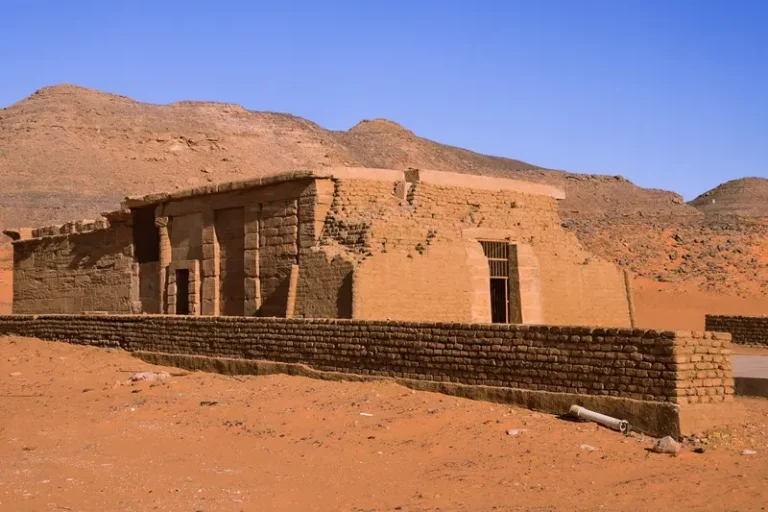
The Temple of Amada
The Temple of Amada is one of the distinctive historical sites located around 180 kilometers to the South of Aswan. Thutmose III, famous ancient Egyptian King, who ruled Egypt from 1479 BC to 1425 BC, constructed the Amada Temple to be the cult of the worship of the gods Amun Ra and Ra Harakhty.
Included in almost all Nile cruise journeys from Aswan to Abu Simbel today, the Temple of Amada is considered the most ancient Nubian historical site that was rescued after the construction of the High Dam and relocated around 3 kilometers away from its old place. It hosts several wall carvings and colorful portraits that still preserve their appeal.
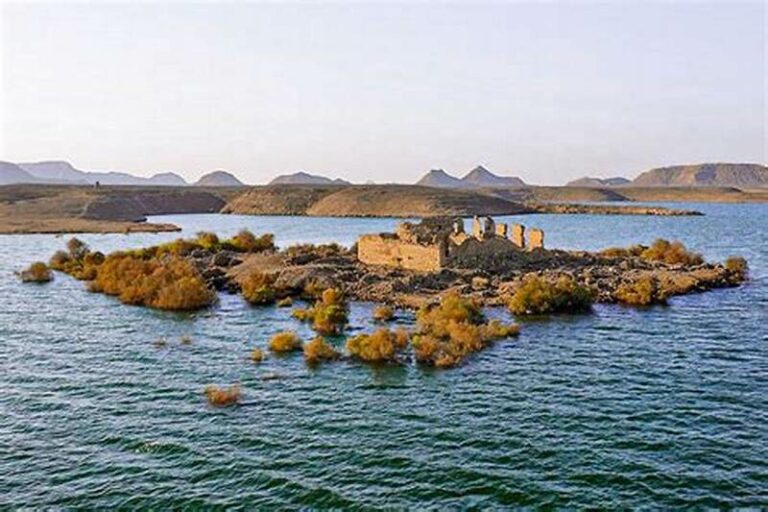
Qasr Ibrim
The ruins of this large and impressive fortress stand as evidence of how notable this establishment has been perhaps thousands of years ago. The fortress of Qasr Ibrim was built on a high cliff to protect the area of Southern Egypt.
Scholars assert that the citadel of Qasr Ibrim was established during the Roman period more than 1500 years ago. Some historical records claim that this location hosted seven large temples mainly for the worship of the goddess Isis and other establishments constructed by the Kings of Nubia more than 1000 years ago.
Can you imagine that this entire impressive complex was transformed into a cathedral during the 10th century AD and remained as a Coptic complex for more than 500 years before the Ottomans took control of the fortress in the 16th century?
Qasr Ibrim is among the monuments that could only be reached by boats, or Nile cruise ships. In fact, tourists cannot walk inside it and boats only take rides around it so tourists can view its details and learn about its rich and unique historical story.
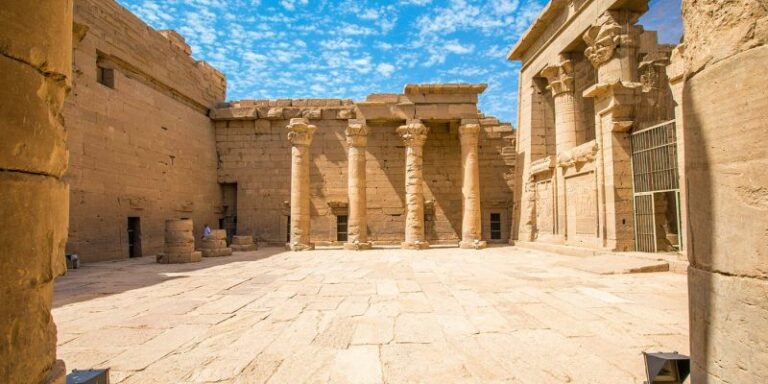
The Temple of Kalabsha
One of the amazing ancient Egyptian temples located between Aswan and Abu Simbel is the temple of Kalabsha. It is also considered among the best examples of the temples that were relocated and finely preserved.
Constructed by famous Roman King, Augustus, who ruled over Egypt and the whole Roman Empire from 27 BC until his death in 14 AD, the Temple of Kalabsha, was built for the worship of Marul, the god of fertility in ancient Egypt.
An interesting fact is that this temple we view today was repositioned 50 kilometers away from its original site as part of the UNESCO led project to rescue the monuments of Nubia.
The Temple of Kalabsha is located today on one of the islands west to the High Dam. The most notable features of the Temple of Kalabsha include the pylon, open courtyard, and an impressive hypostyle hall with wall carvings portraying Amenhotep I providing offerings to the fertility god, Marul.
Other interesting places located near the Temple of Kalabsha; there is the Roman Kiosk of Qertassi. There are two stone capitals of the goddess Hathour dominating the entrance to the small kiosk.
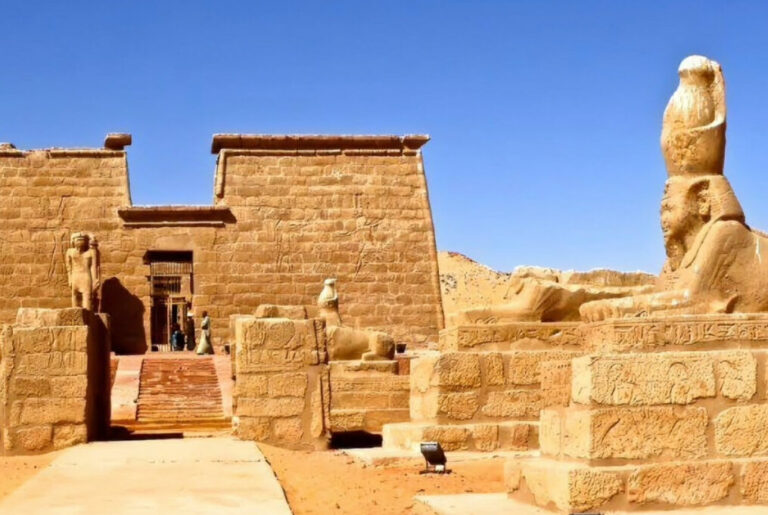
The Temple of Wadi Al Sebua
The Temple of Wadi Al Sebua represents one of the ancient temples that were constructed by Ramses II in the Southern section of Egypt, in the area between Luxor and Aswan.
The Temple which was relocated, like many other historical sites in Southern Egypt, was built for the worship of the two gods Amun Ra and Ra Hakharty.
Apparent from its name; Wadi El Sebua, means the valley of the lions. This is because the most amazing section that remained of this remarkable temple is the avenue of the sphinxes, in addition to the sanctuary that was transformed into a Coptic Church in the 5th century, which is evident in some of the wall carving of the temple.
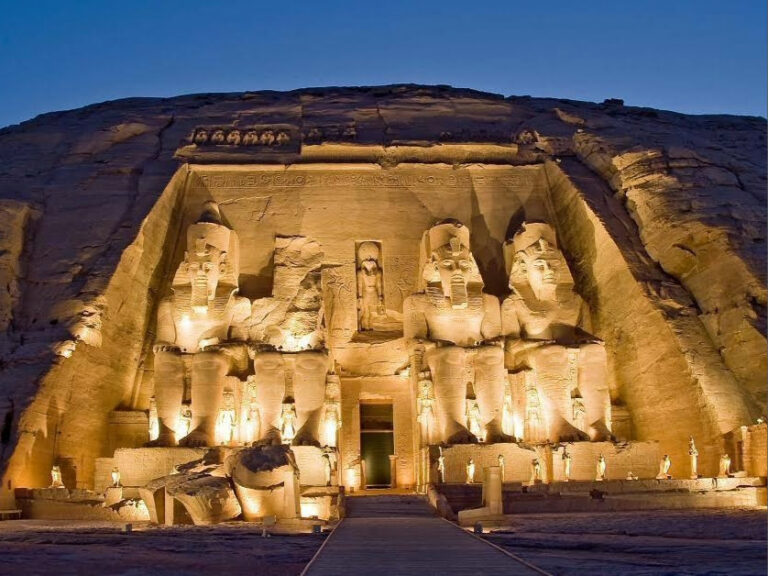
The Temple of Abu Simbel
The Temple of Ramses II of Abu Simbel is perhaps the most astonishing temple of ancient Egypt. The complex in fact consists of two temples that were cut out of rocks and were both relocated as part of the project of UNESCO in Nubia.
It takes tourists around 3 hours by bus to reach the current location of the temple of Abu Simbel today, situated around 290 kilometers to the South of Aswan.
The larger temple at Abu Simbel was dedicated to the three most dominant gods in Egypt in the 13th century BC, Amun, Ra, and Ptah. The most marvelous feature of this temple is the facade with the four huge statues of Ramses II that were cut out of rocks.
The interior of the temple is characterized by its huge and notable hypostyle hall that is 18 meters in length and 16.7 meters in width. Eight huge pillars support the roof of the complex from inside.
The Temple was brilliantly constructed in a way that allows the rays of the sun to reach inside the sanctuary of temple two times every year; on the 21st of October and the 21st of February to light the statues of the gods situated inside, except that of Ptah as he was always associated with hell.
The smaller temple at Abu Simbel, the Temple of Queen Nefertari, and the most favorite wife of the king Ramses II is situated around 100 meters to the North East of the larger temple.
The Temple dedicated to the goddess Hathour is featured with its rock-cut facade. It consists of a number of statues of the Queen on one side and the king to the other side. These statues are more than 10 meters in height. This is the only example in the Pharaonic history where the king and the queen have statues of both height and size.



